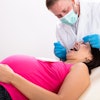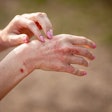Dental hygienists should play a more prominent role in providing dental care to residents of elderly care facilities, according to a study in Community Dental and Oral Epidemiology (August 2011, Vol. 39:4, pp. 378-384).
A growing number of elderly Australians are now living in residential aged care facilities, according to researchers from the University of Melbourne School of Dental Science. These residents are commonly dependent on others for their daily oral hygiene care and often display high levels of plaque and calculus, they noted.
The researchers thus set out to determine the ability of a dental hygienist to undertake a dental exam for residents of aged care facilities, devise a periodontal and preventive treatment plan, and refer patients appropriately to a dentist.
They examined 510 residents from 31 Victorian residential aged care facilities, including 275 dentate residents, between May 2005 and June 2006. The residents were examined by a single experienced dental epidemiologist and one of four dental hygienists using a plane mouth mirror and periodontal probe.
The treatment needs of residents examined were high, with nearly all of the 275 dentate residents requiring preventive and periodontal treatment, and three-quarters requiring referral to a dentist for treatment, the researchers found. There was excellent agreement between the dentist and hygienists regarding the decision to refer residents to a dentist for treatment, with high sensitivity (99.6%) and specificity (82.9%).
"Dental hygienists have the skills and knowledge necessary for undertaking a dental examination for residents, correctly identifying the majority of residents who require a referral to a dentist [and] are capable of formulating appropriate dental hygiene treatment plans for residents of aged care facilities," the study authors wrote.
There should be greater utilization of hygienists in the provision of dental care to residents of aged care facilities, as a safe, efficient and effective use of health resources, they concluded.



















